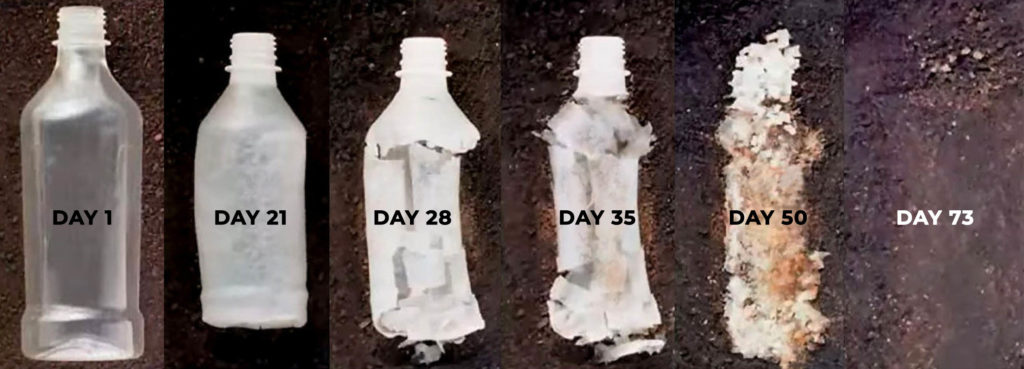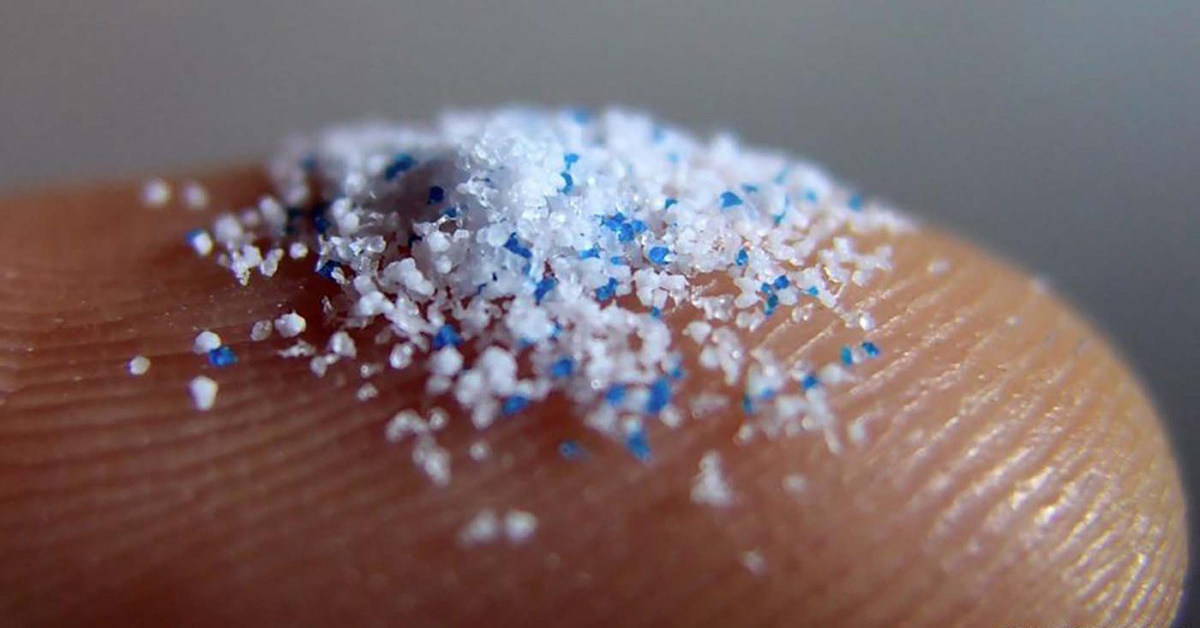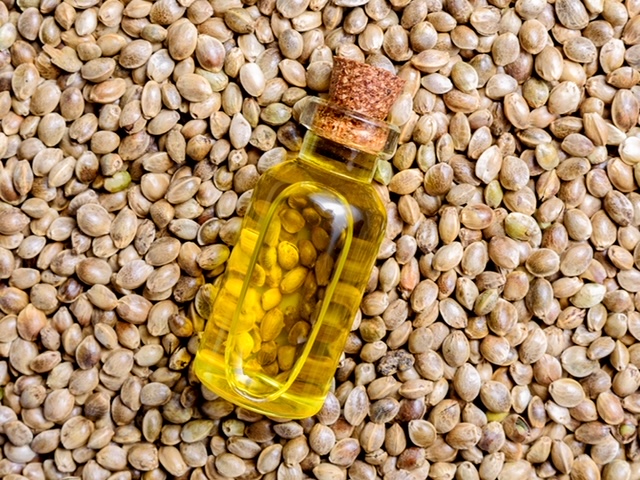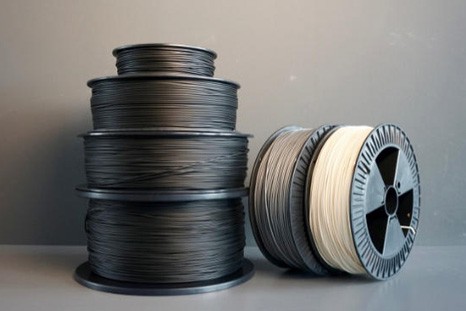Hemp Bio Plastics Poised to Replace Petrol Plastics

Did you know that we can use hemp to replace the petroleum used in making plastic for many of the products we use every day? Around the world, countries are efficiently banning single use plastics. Kenya for example, completely banned plastic bags in 2017. it has been called "the worlds strictest" plastic ban. Similarly, California and New York State banned single use plastic bags by 2020. Paper straws are also becoming more commonplace. While fazing out single use plastics is a step in the right direction, it doesn't begin to scratch the surface our plastic pollution issue.
Petroleum plastics can take 1000 years to decompose. That means every bit of plastic ever made is still around today. Recycling may seem to be the answer but the process is quite inefficient. Over 1/3 of the plastic intended for recycling is never recycled because the process requires the plastic to be completely clean in order to be reused. At this time only 9% of the plastic on earth has been recycled. It is then compacted and shipped to developing countries or sold to places like China under false claims that it can be reused.

The problems related to plastic pollution aren't isolated to the environment. The human body is suffering as well. Micro plastics in the worlds fresh water supply are plentiful and rising by the year. Our current water treatment technology is not advanced enough to filter out the micro plastics. The result is humans as well as animals ingesting micro plastics every day. Even drinking and eating from some types of plastic disrupts how the body develops and functions. We are only beginning to find out how this affects living things.
When we think of plastic, the obvious things come to mind like grocery bags and water bottles, but our lives are absolutely dependent upon plastic. If you were to take a look around your house right now, the high presence of petroleum-based products may be surprising. Most carpet is even made from petroleum-based nylon or polyester. We are so accustomed to petroleum’s place in our lives, that consumers may not even realize there is an environmentally friendly alternative.
Many of the the things made out of plastic today were historically made from hemp products. With the technological advancements we have currently, nearly everything made from plastic can now be made with hemp bio plastic.

History of industrial hemp usage
Some of the earliest plastics and fabrics are made from cellulose fibers derived from hemp. Hemp cloth was found in ancient Mesopotamia dating back to as early as 8,000 BC. It was the first subsidized crop by the Canadian government and was in line to be a major deciding factor in Canada’s independence from Britain. In the Americas by the 1700s, farmers were legally required to grow hemp. Most notably the first draft of the declaration of independence was written on hemp paper. Henry Ford touted the endless benefits of the plant and produced a car prototype whose body was made from 70% hemp fiber. The use of hemp in all things industry was widespread until the early 1900s when petroleum products became more widely used. Upon the widespread conversion from hemp to petroleum, the economy became dependent on the plastics industry. We are only now beginning to do the necessary work to preserve our planet by creating alternatives to fossil fuel-based products.

Medicinal Hemp Through History
The earliest recorded evidence of medicinal usage is in Pên-ts’ao Ching, a text attributed to Emperor Shen-Nung from about 2000 B.C. the Chinese used this plant medicine in the treatment of many ailments, from the treating of wasting disease, and stomach disturbances to menstrual discomfort. The Romans had a long history of hemp used to aid with ear pain, stomach-related issues, and burns. Middle Eastern cultures used hemp as an anti-inflammatory, pain reliever, anti-emetic, anti-epileptic, and diuretic. Today non-psychoactive hemp-derived CBD compounds are shown to improve symptoms of schizophrenia, depression, multiple sclerosis (MS), Huntington’s disease, Parkinson’s disease, anxiety, anorexia, chronic motion sickness, chemotherapy-induced nausea, and failure to thrive in infants. As studies progress, we are discovering more benefits of using hemp compounds to treat a variety of ailments.
What Products Can We Make from Hemp Bioplastics?
Almost every item we use made from petroleum plastic can be made from hemp plastic. 3 of the least biodegradable contributors to our landfills are single-use packaging, automotive materials, and electronics. While electronics may be further down the line to consider using hemp-based plastic, many large companies have jumped on the bandwagon to reduce waste and lessen our dependence on fossil fuels. We consider most hemp-based alternative products “luxury” items because of the extra steps that were necessary to acquire the materials. These extra steps also result in hemp bioplastic alternatives being more expensive. The farm bill of 2018 descheduled hemp and CBD making them an ordinary agricultural commodity. With the growing acceptance and availability of hemp products in the US, we can expect the switch from petroleum-based plastics to become more cost-effective. Hemp bioplastics only take 3 months to 5 years to decompose, unlike petrol plastics which take centuries. They are also able to be recycled indefinitely. The 5 items below will make the largest positive impact on the health of our planet if hemp bioplastics are used in their manufacturing.

1. 3D printer filament
The growing popularity of the personal 3D printing device offers a unique opportunity to use hemp bioplastic in the early stages of an industry that is quickly advancing. The materials are steadily dropping in price and becoming comparable in price to their petroleum-based plastic counterparts. This is not an industry married to traditional plastic, and many would-be consumers of this product are universities, small businesses, and hobbyists. The good decision to switch to a more environmentally friendly alternative has a high probability to be made on a personal level rather than at a corporate level.
These make up a large part of the plastic waste in our landfills and oceans. By eliminating the use of traditional petroleum-based plastic bottles we can begin to reduce the accumulation of the nearly 8 million tons of plastic entering the oceans annually. This large volume of petroleum-based plastic in our water sources is detrimental to the health of humans and the planet. There are plenty of hemp bioplastic water bottles available, but they are still a bit expensive. Stanford University is working hard to develop a cost-effective composition using hemp to replace water bottles at a price most companies can afford.
3. Car parts
Some of the world’s most well-known luxury car brands are already using hemp bioplastic in the manufacturing of the bodies of their cars. Several BMW models currently feature hemp door panels. The hemp material used for car parts is lighter and more durable than the petroleum-based materials. Think of the miles of discarded cars in junk yards. The rubber tires will only take 50 to 80 years to to break down. The engine block however, will take over 500 years. And the longest lasting materials are the plastics, those take over 1000 years to biodegrade. We are working toward a future where many of the car parts set to end up in a junk yard are easily biodegradable.

4. Electronics
A company named Zeoform has created a hemp plastic composite to manufacture musical instruments, speakers, TVs, and even furniture. The possibilities are endless with this type of building material. It can be used to make most things wood and plastic are used for.

5. Toys
LEGO Brand has plans to move to hemp bioplastic by 2030. Allan Rasmussen, project manager at LEGO says that the new material should be indistinguishable from the traditional bricks, and stand the test of time. Toys account for a large amount of volume in landfills. Kids outgrow toys as quickly as they outgrow clothing. Many people do recycle discarded toys but more often than not, they are destined for the landfill.
Benefits of switching to hemp bioplastic
- Up to 80% reduction in carbon emissions
- Increased C02 absorption while emitting oxygen
- Significant reduction in insecticide and pesticide pollution
- Declining levels of microplastics in the water supply
- Preservation of marine life

The biggest way we, as consumers can be the change we need is to vote with our wallets and at the polls. Companies will move toward using sustainable materials when they see their customers buying sustainability made products. Law makers will enact change when the population votes for these changes. The solution is to work together and support companies that are focused on a sustainable future.
